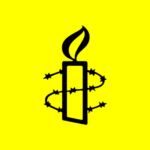Article 1: We are all born free and equal
The 1948 Universal Declaration of Human Rights (UDHR) is – obviously – a document about human rights. So why is dignity listed before rights in Article 1?
Dignity is the foundation of all human rights. Human beings have rights, and should be treated with utmost care, precisely because each one possesses intrinsic worth. Former UN rights chief Zeid Ra’ad Al Hussein called these opening words “perhaps the most resonant and beautiful words of any international agreement.” They underline that “human rights are not a reward for good behavior,” as he put it, but the entitlement of all people at all times and in all places.
Reacting to the horror of the two World Wars, the international community thought it important in 1948 to emphasize the concept of human dignity in the very first words of this groundbreaking document, underlining a term that was already highlighted in the opening line of the UDHR’s Preamble, as well as in the Charter that founded the United Nations three years earlier.
Mary Robinson, another former human rights chief, regards dignity as “an inner sense of self-worth,” a concept that “evokes an empathy with the other, connects us one to the other.” It has also provided the springboard for new interpretations of human rights. As Robinson said, “in our inter-connected world, that empathy must expand to tackling the gross inequalities that raise issues of justice.”
Dignity (a word that appears five times in the Declaration) is on the one hand an irrefutable argument, and on the other an ambiguous concept, not always easily translated into legislation. Even so,dignity now is recognized as a right in more than 160 of the world’s constitutions (of 193 UN members), compared to only five countries that used the term in their constitutions in 1945.
And it often falls to judges to make sure human dignity is respected. Judges like Albie Sachs, who devoted his life to ensuring, and then protecting, human dignity. As a South African anti-apartheid campaigner, he spent months in solitary confinement and lost an arm and his sight in one eye when his car was blown up by security agents.
Later, he sat for 15 years as a judge in South Africa’s highest court. He has written that he found himself in tears after ruling that South African Airways could not discriminate against an air steward with HIV. “The tears had come because of an overwhelming sense of pride at being a member of a court that protected fundamental rights and secured dignity for all,” he said.
Securing dignity for all is at the heart of a UN campaign that draws on the preceding words in Article 1. “Free and Equal” is the slogan for the UN’s campaign against homophobia and transphobia that began in 2013 and aims “tobuild a world where no one has to be afraid because of their sexual orientation or gender identity,” in the words of UN Secretary-General António Guterres
Gender is a concept that is – possibly subtly – addressed in Article 1, and indeed in almost every clause of the UDHR. For its time, the document is remarkably lacking in sexist language. Aside from the single phrase “himself and his family,” which appears in Articles 23 and 25, the document refers throughout to “everyone,” “all” or “no one.”
This trailblazing usage reflects the fact that women played a prominent role in drafting the UDHR, for the first time in the history of international law-making. The process was steered by Eleanor Roosevelt, the former U.S. First Lady and an outspoken champion of human rights. Women from Denmark, Pakistan, the Communist bloc and other non-western nations also made crucial contributions.
Article 1’s first words echo France’s seminal Déclaration des droits de l’homme et du citoyen, (Declaration of the Rights of Man and of the Citizen), adopted soon after the French Revolution in 1789. Thanks to the tenacious Indian drafter Hansa Mehta, the French phrase “all men are born free and equal” became “all human beings are born free and equal.”
She objected to Roosevelt’s assertion that “men” was understood to include women – a widely-accepted concept at the time. Mehta argued that countries could use this wording to restrict the rights of women, rather than expand them.
The UDHR’s women drafters provided an enduring legacy – even in a world where much work remains to be done. In almost all countries, women continue to earn less than men. Discriminatory practices towards women are often justified by referring to traditional, historical, religious and cultural attitudes. Girls are less likely than boys to go to school or stay in school. Women often find their mobility limited because of expectations that they will be care-givers. They often have limited choices in whom to marry – or whether to marry at all – and little control over their reproductive choices.
Despite all that remains to be achieved, the pioneering women who were part of the drafting process from 1946 to 1948 enshrined equality as a universal goal and provided a foundation in international law for those who still struggle to make equality a reality. Not only women, of course, but also people with disabilities, elderly workers, members of ethnic and religious minorities, indigenous groups, migrants, children and anyone anywhere facing discrimination.



